Southeast University
Southeast University (simplified Chinese: 东南大学; traditional Chinese: 東南大學; pinyin: Dōngnán Dàxué, SEU), colloquially Dongda (Chinese: 东大; pinyin: Dōngdà) is a public research university located in Nanjing, Jiangsu, China. It was part of one of the oldest universities and the first coeducational university in China.[4] It is a member of both Project 985 and Project 211, and sponsored by the Ministry of Education of China aiming to become a well-known world-class university.[4] It is a Chinese Ministry of Education Class A Double First Class University.[5]
东南大学 | |
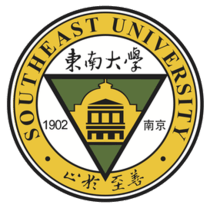 | |
Former name | Sanjiang or Liangjiang Normal College (1902–1914) Nanking Higher Normal School (1915–1923) |
|---|---|
| Motto | 止于至善[1] |
Motto in English | Strive for Perfection[2] |
| Type | Public |
| Established | 1902 |
| President | Zhang Guangjun |
Academic staff | 2,832[3] |
| Undergraduates | 16,125[3] |
| Postgraduates | 16,749[3] |
| Location | , , 32°03′28″N 118°47′20″E |
| Campus | Urban: Historical Sipailou Campus
Urban: Medical Dingjiaqiao Campus Suburban: Main Jiulonghu Campus |
| Colors | |
| Website | www |
SEU has been ranked among the top 20 research universities in China,[6][7] and among the top 300 in the world.[8] In the official subject ranking conducted by the Ministry of Education of China, SEU has been ranked top three nationally in 8 fields including architecture, landscape architecture, urban planning, art history, civil engineering, electronic engineering, transportation engineering and biomedical engineering.[9]
Its source Sanjiang Normal College, was established in 1902 as a modern university on the campus of an academy which dates back to 258. In 1921, the school changed its name to National Southeast University and became the second national university in China, and in 1928 was renamed to National Central University , the nation's flagship university.[10] After the KMT government lost Nanking to the Communist Party of China, the university was renamed as National Nanking University in August 1949. It was renamed Southeast University in May 1988.
History
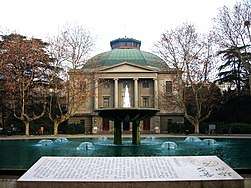
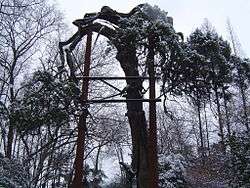
The Imperial Nanjing School, the highest educational institution of kingdom, as the predecessor, was founded in CE 258 in the period of the Three Kingdoms. The imperial school enjoyed the same campus with the current Southeast University since the 14th year of Hongwu reign (CE 1381) in Ming dynasty.
Sanjiang Normal College (三江师范学堂) (1902–1905)
At the end of the 19th century, under the domination of Qing Dynasty, the Chinese society was under the situation of domestic trouble and foreign invasion. 1901, the Qing government began to reform under this situation, and in 1902 issued 'The imperial rules for colleges', and adapted the new modern education system. On May, 30th of the same year, the Liangjiang governor Liu Kunyi submitted a document of preparing colleges to the Qing government, proposing to open normal college in Jiangning (Nanjing). In February 1903, the following Liangjiang governor Zhang Zhidong submitted a proposal to open Sanjiang Normal College to government, and authorize Miao Quansun as a representative to Japan for investigation, who later was nominated as the inspector of Sanjiang Normal College and responsible for the project preparation. In September 1903, Sanjiang Normal College officially opened.
Liangjiang Normal College (两江师范学堂) (1905–1911)

Due to the ambiguous meaning of the college name which led to several disputes, the Sanjiang Normal College was named as Liangjiang Normal College in 1905. The year after, Li Ruiqing was nominated as the principal, who closed the junior normal subjects, and added the public subjects, professional subjects, and also created the first hand-painting subject in China. Until 1907, there had already been Geography-History department, Chinese-Foreign Language Department, Mathematic-Physics- Chemistry Department, and Agriculture Department. At the end of 1911, due to the outbreak of Xinhai Revolution, Liangjiang Normal College was almost closed.
National Nanjing Higher Normal School (1915–1923)
On 15 July 1914, Governor Han Guojun appointed Jiang Qian as principal, who was responsible for the starting up of Nanjing Higher Normal School in the same site of Liangjiang Normal College. Jiang employed the US-educated scholar Guo Bingwen as the dean of teaching, Chen Rong as the advisor, and sent both to Europe to investigate the education system and recruit teachers. On 10 September 1915, Nanjing Higher Normal School was officially started. In December 1919, Nanjing Higher Normal School formally recruited 8 female students and 50 more female visiting students, being the first school in China allowing both females and males to study together. The Polytechnic Faculty was established by the school in 1916.
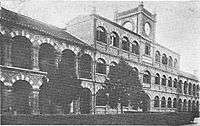
National Southeast University (国立东南大学) (1921–1924)
In September 1918, Guo Bingwen was the president in the south division. On 7 April 1920, Guo proposed the foundation of the "Southeast University Preparatory Committee". In September, Guo proposed to the State Council and the Ministry of Education to apply for the establishment of Southeast University, and in December it was approved. On 6 June 1921, the Board of Southeast University was established, Guo as president, and the university was officially opening in September. In December, the school council decided that Nanjing Higher Normal School would be incorporated into Southeast University. Southeast University, based on the foundation of Nanjing Normal Higher School, until 1923, had possessed arts and sciences, Education, engineering, agriculture, business totaling more than 20 lines in 5 subjects. Based on the Polytechnic Faculty of Nanjing Higher Normal School, the Engineering School of National Southeast University was established in 1921.
National Hohai Technology University (1924–1927)
In 1924, the Engineering School of National Southeast University merged with the water conservancy school Hohai Engineering School to form National Hohai Technology University, with Mao Yisheng as president.
National Central University (国立中央大学) (1927–1949)
In 1927, National Hohai Technology University along with several other schools merged with National Southeast University to form National Central University.
National Nanjing University (国立南京大学) (1949–1952)
In April 1949, the People's Liberation Army occupied Nanjing and the Nanjing Military Committee took over National Central University. On 8 August 1949, National Central University was renamed as National Nanjing University, and then Nanjing University in October 1950.
Nanjing Institute of Technology (南京工学院) (NIT, 1952–1988)
In 1952, the People's Republic of China began a national adjustment of its colleges. In Nanjing, the adjustment was mainly on Nanjing University and University of Nanking. Nanjing Institute of Technology was formed in the original site of National Central University from the Engineering School (at the time, the biggest school) of Nanjing University and the engineering departments of University of Nanking, including Chemistry Department and Electrical Machine Department. Later there were also some relevant subjects from Jiaotong University, Zhejiang University, Shandong University, Xiamen University, Fudan University, and Private Jiangnan University merged into Nanjing Institute of Technology.
Southeast University (东南大学) (1988 – present)
In June 1988, Nanjing Institute of Technology was renamed as 'Southeast University', starting to convert from a technology institute to a technology-featured comprehensive university. Since 2000, the name Nanjing Institute of Technology is used by a different institution.
In 2000, Nanjing Railway Medical College and two other schools were merged into Southeast University.
Academic
| Rankings | |
|---|---|
| National | |
| ARWU[11] | 12 |
| Wu Shulian[12] | 14 |
| Global | |
| ARWU[13] | 151–200 |
| US News[14] | 311 |
| QS[15] | 501–510 |
| THE[16] | 501–600 |
| National by Subject (MOE)[9] | |
| Art history | 1 |
| Biomedical engineering | 1 |
| Transport engineering | 1 |
| Architecture | 2 |
| Electronic engineering | 2 |
| Landscape architecture | 2 |
| Civil engineering | 3 |
| Urban planning | 3 |
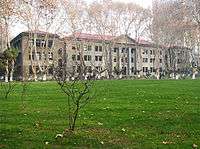
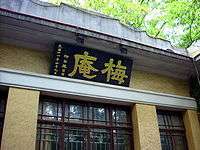
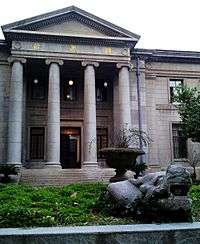
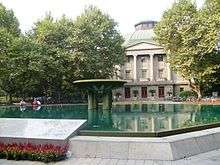
Southeast University is one of 32 universities directly administered by the Chinese Department of Education, which are considered the top class universities in China. The university has 16,000 undergraduate students and 10,000 graduate students in over 30 schools and departments. The admission to SEU is very competitive. Normally the university enrolls top 2% high school students from nationwide to its undergraduate programs, and top 5% undergraduate students to its graduate program. Most students are recruited by engineering or some big schools such as School of Mechanical Engineering, School of Energy & Environmental Engineering, School of Information Science & Engineering, School of Civil Engineering, School of Computer Science & Engineering, School of Economics & Management, as well as School of Transportation Engineering. The rest students are enrolled by some smaller schools and departments like School of Automation, School of Electronic Science, and Department of Physics.
There are about 5,600 faculty members in Southeast University. Among all the faculty members, there are 8 members of Chinese Academy, 25 "Changjiang Scholars", 1 fellow of State Department Degree Committee, 9 members of State Department Degree Committee, 31 distinguished national youth research scientists, 7 members (ranking 2nd nationwide) of "863 Projects" expert committee, and 57 excellent Department of Education research scientists.
The university has 64 undergraduate programs, 206 master programs, 109 doctoral programs, as well as 15 postdoctoral research sites. In the most recent official rankings summary, 6 programs are top 5 and another 6 programs are top 10 nationwide. Especially the School of Biomedical Science & Engineering ranks first place. The university has a top research ability. There are 10 National First-class Academic programs, 6 potential National First-class Academic Programs. 3 National Research Labs, 1 National Professional Lab, 2 National Engineering Research Centers, and 7 Department of Education First-class Labs.
In 2006, the research funds for the university is 600 million Chinese Yuan, which lists the 7th place in the country.
Rankings
| University rankings | |
|---|---|
| Global – Overall | |
| THE World[17] | 501-600 (2018) |
| National – Overall | |
| BCUR National[18] | 13 (2018) |
Southeast University is one of the top 100 universities in scientific research and development in China.[19] It has over 20 national or provincial research institutes, with a number of key research bases. Over the last decade, it has completed more than 1000 research projects, of which over 500 have been awarded the national, provincial or municipal science and technology prizes. Its research fund exceeded 1.1 billion yuan in 2010, which placed 11th nationwide. The SEU Architecture Design and Research Institute, which is one of the few national first-class design institutes, has undertaken various major projects. The SEU-affiliated Zhongda Hospital was set up in 1935 and rated as "Class A Grade 3" by the Ministry of Public Health.
In 2007, Southeast University was listed 443rd among world universities.[20] In 2010, according to a leading scientific journal "Nature" (Nature Publishing Index 2010 China), the report ranked Southeast University as the 8th among all domestic research institutes.[21]
In 2010 QS top university ranking, it was ranked: 87th overall among Asian universities,[22] 76th in engineering and I.T. among Asian universities,[23] 301–350th in engineering and I.T worldwide.[24] In 2016, Southeast University was ranked 201–300 in ARWU World University Ranking, and 20th in ARWU Field - Engineering Ranking.[25] In 2017 Chinese national university ranking edited by Wu Shulian, Southeast University was placed 14th in the national university ranking in China, together with other 22 universities as China's top-tier national universities.[26]
Campus
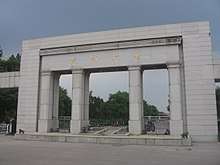
There are 3 main campuses of Southeast University namely Sipailou Campus, Jiulonghu campus and Dingjiaqiao campus. Sipailou (Xuanwu District) and Dingjiaqiao campus (Gulou district) are in Nanjing city and Jiulonghu campus in suburbs of Nanjing( Jiangning District).
The Sipailou Campus of Southeast University is the flagship campus that is inherited from National Central University. It is located at 2 Sipailou, Nanjing, China. In 1988, Pukou Campus which located in Pukou Campus across the Yangtze River was opened as another site mainly for the education of first and second year students (freshman and sophomores). However, in 2008 Pukou Campus was separated from Southeast University and was then acquired by Cheng Xian Institute.
In 2001, SEU acquired three other colleges in Nanjing. They are: Nanjing Railway Medical College, Nanjing College of Advanced Transportation, as well as Nanjing Advanced School of Geology. Nanjing Railway Medical College became the School of Medicine at Southeast University after it merged with SEU. The medical school is located in Dingjiaqiao.
In 2005, when Jiulonghu Campus, located in Jiangning District, was founded, the authority of Pukou Campus was transferred to the Chengxian College of Southeast University. Most of the undergraduate students and master students are studying at Jiulonghu Campus currently. After Jiulonghu Campus was opened, the Sipailou Campus basically includes some most important research institutes and administrations of the university. Jiulonghu Campus is situated in the south of the Jiangning Technology Development District, to the east of Suyuan Avenue, west of Shuanglong Street, and south of Jiyin Street. It is around 20 kilometers away from the Sipailou Campus, with an area of 3749mu. The architecture design of Jiulonghu Campus follows the basis of Southeast University's culture, characterized in the combination of public teaching and research which compromises the merit of Chinese and Western styles, forming a green and active university community. The total building area in Jiulonghu Campus is 574 thousand square meters with the investment of 1.6 billion yuan.
Schools and departments
- Office of President
- Education Foundation
- University history
- Chien-Shiung Wu Memorial Hall
- Galileo training and application research center
- General Alumni Association of Southeast University
- School of Architecture
- School of Mechanical Engineering
- School of Energy & Environment Engineering
- School of Information Science & Engineering
- School of Civil Engineering
- School of Electronic Science & Engineering
- Department of Mathematics & Applied Mechanics
- School of Automation
- School of Computer Science & Engineering
- Department of Physics
- School of Biological Science & Medical Engineering
- School of Material Science & Engineering
- School of Economics & Management
- School of Electrical Power Engineering
- School of Foreign Languages
- School of Chemistry and Chemical Engineering
- School of Transportation Engineering
- School of Instrument Science & Engineering
- School of Art
- School of Humanities
- School of Law
- School of Medicine
- School of Public Health
- Department of Physical Education
- School of Continuing Education
- College of Software Engineering
- Cheng Xian College
- College of Integrated Circuit
- Wu Jian Xiong (Chien-Shiung Wu) College
- School of Cyber Science & Engineering[27]
Notable people and alumni
Politicians
- Chiang Kai-shek (蔣介石), President of Republic of China
- Huang Wei (黄卫), vice chairman of Xinjiang Uygur Autonomous Region, the former Vice Minister of Construction (Civil Engineering)
- Zhenya Wang, Australian senator
Scientists
- Zhang Zhushan, Chemist
- Wu Chien-Shiung, physicist, known as the "Oriental Marie Curie", with β-decay experiments demonstrating that in the weak interaction, symmetry is not conserved
- Huang Weilu, missile engineer, recipient of the Two Bombs, One Satellite Medal
- Ren Xinmin, missile engineer, recipient of the Two Bombs, One Satellite Medal
- Mao Yisheng, bridge engineer
- Zhou Ren (周仁), Metallurgy and ceramics scientist
- Liu Dunzhen, architect, one of the "Five Masters of Architecture"
- Yang Tingbao, architect, one of the "Five Masters of Architecture"
- Qi Kang, Architect
- Wu Liangyong, Architect
- Xia Jianbai (夏坚白), mapping scientist
- Fang Jun (方俊), Geophysicist
- Chen Wenxi (陈文禧), Machinery expert
- Yang Liming (杨立铭), Nuclear physicist
- Shu Guangji (舒光冀), materials scientist
- Wu Zhongwei (吴中伟), Materials scientist
- Qian Zhonghan (钱钟韩), Automatic control scientist
- Zhang Zhongjun (张钟俊), Control theorist
- Ni Shangda (倪尚达), Electronic scientist
- Hu Minggui (胡名桂), Electronic scientist
- Qian Fengzhang (钱凤章), Electronic scientist
- Tian Binggeng (田炳耕), Electronic scientist
- He Zhenya (何振亚), Information scientist
- Liu Shenggang (刘盛纲), Electronic scientist
- Wei Yu (韦钰), Electronic scientist
- Xia Peisu (夏培肃), computer scientist
- Ni Guangnan (倪光南), computer scientist
- Huang Yushan (黄玉珊), Aviation scientist
- Gao Hong (高鸿), Chemist
- Liang Xiaotian (梁晓天), chemist
- Min Enze, chemist
- Shi Jun (时钧), chemist
- Jin Baozhen (金宝桢), Mechanics Scientist
- Min Guirong (闵桂荣), aerospace engineer
- Ding Henggao (丁衡高), high-precision machinery expert
- Yang Huanming, Geneticist
- He Lin (贺林), Geneticist
- Zhengxu Zhao (赵正旭), Chief scientist of space mission visualization & control, Professor & Fellow of British Royal Society of Arts (FRSA)
- Hans-Werner Gessmann, Clinical Psychologist, founder and pioneer of humanistic psychodrama
- Harry Shum (沈向洋), Computer scientist, Executive Vice President of Artificial Intelligence & Research at Microsoft.
Others
- Yung Ho Chang (张永和), Owner of 'Architecture Prize' awarded by American Academy of Arts, Faculty of the U.S. Massachusetts Institute of Technology (MIT), Department of Architecture (Department of Architecture, 81)
- Yuan Chun: Graduate from Southeast University, studied in Germany, a pioneer to promote the militarization education in China, The first to open female college students swimming lessons which abolished the old Chinese prohibition of female college students to swim
- Cheng Dengke: Graduate from Southeast University, studied in Germany, a pioneer to promote the militarization education in China, a pioneer Chinese women's gymnastics
- Cheng Taining (程泰宁), Chief Architect in Chinese United Engineering Corporation, Host of Chinese United Cheng Training Architectural Design Institute(56)
- Jinjiong Hua, U.S. President's Award winner, the U.S. National Science Foundation award winner (Mechanical Engineering)
- Ye Mao, director of Cornell University (administered by the College of Accounting)
- Hualong Xing, China Electronic Information Industry Group Corporation chairman Sang Fei (Radio Engineering)
- Wu Haijun, Shenzhen New World Industrial Co., Ltd., Shenzhen Hasee chairman (Master of Power Engineering)
- Harry Shum (沈向洋), Microsoft's senior vice president and chief scientist of the National Natural Science Foundation judges (Youth Class)
- Mr. Xu, Kingdee International Software Group Co., Ltd. Chairman and chief executive officer
- Lin Jiaxi, CEO of IFC investment adviser
- Min Yu, Ideal Group (Asia) Co., Ltd. Founder
- Meng Jianmin (孟建民), China Architecture Design Master, president of Shenzhen Construction General Institute
- ZHANG Gui-ping, chairman of Suning Universal Group (Suning Group) ZHANG Gui-ping
- Chenxing Han, South East Qixia Construction (Group) Company Party branch secretary and general manager, senior engineer
- Sun Chao, chairman of Sun Dairy Co., Ltd. (Electronic Engineering)
References
- "对校训"止于至善"的说明 (Chinese)". Retrieved 14 July 2014.
- "Glance at SEU". Archived from the original on 15 July 2014. Retrieved 21 July 2018.
- "SEU Overview". Retrieved 30 January 2018.
- "东南大学简介". Southeast University. 10 May 2012. Retrieved 25 October 2012.
- "教育部 财政部 国家发展改革委 关于公布世界一流大学和一流学科建设高校及建设 学科名单的通知 (Notice from the Ministry of Education and other national governmental departments announcing the list of double first class universities and disciplines)".
- "武大版中国一流大学榜单出炉". 网易. 22 February 2012. Retrieved 10 February 2013.
- "武书连2012中国一流大学名单". 搜狐. 21 December 2011. Retrieved 10 February 2013.
- "ARWU ranking of Southeast University". ARWU. 21 December 2011. Retrieved 10 February 2013.
- "我校在2012全国学科评估中获得3项第一". SEU. 29 January 2013. Retrieved 10 February 2013.
- 炸弹下壮大的中央大学 王运来 Archived 15 May 2013 at the Wayback Machine。
- 最好大学网. "2017中国最好大学排名_最好大学网". www.zuihaodaxue.com.
- "武书连2017中国大学排行榜公布 清华蝉联第1". edu.sina.com.cn. 26 December 2016.
- http://www.shanghairanking.com/World-University-Rankings/Southeast-University.html. Missing or empty
|title=(help) - https://www.usnews.com/education/best-global-universities/china?page=2
- "QS World University Rankings".
- "World University Rankings". 18 August 2017.
- "World University Rankings". 18 August 2017.
- "Overall Ranking, Best Chinese Universities Rankings - 2018". www.shanghairanking.com.
- "Archived copy". Archived from the original on 11 July 2011. Retrieved 10 October 2010.CS1 maint: archived copy as title (link)
- "Archived copy". Archived from the original on 6 October 2010. Retrieved 10 October 2010.CS1 maint: archived copy as title (link)
- "Archived copy". Archived from the original on 31 August 2011. Retrieved 25 August 2011.CS1 maint: archived copy as title (link)
- "QS University Rankings: Asia". Top Universities. Retrieved 3 July 2015.
- "Archived copy". Archived from the original on 19 January 2011. Retrieved 10 February 2011.CS1 maint: archived copy as title (link)
- "Archived copy". Archived from the original on 12 June 2011. Retrieved 10 February 2011.CS1 maint: archived copy as title (link)
- "Southeast University - Academic Ranking of World Universities - 2018 - Shanghai Ranking - 2018". www.shanghairanking.com.
- "Wu Shulian 2017 China University Ranking". Sina. 26 December 2016. Retrieved 6 December 2017.
- "网络空间安全学院". cyber.seu.edu.cn. Retrieved 29 March 2019.
External links
- Official Website 东南大学 (in Chinese)
- Official website (in English)
- University History
- 3d map of SEU (in Chinese)
